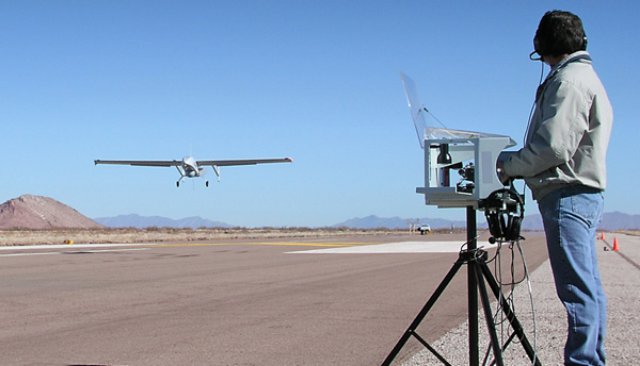 New Mexico is home to the lone flight test centre approved by the Federal Aviation Administration. With the controversy surrounding these unmanned aircraft, state officials and potential business interests are keen to stress their positive applications.
New Mexico is home to the lone flight test centre approved by the Federal Aviation Administration. With the controversy surrounding these unmanned aircraft, state officials and potential business interests are keen to stress their positive applications.
“There has been a lot issues in the press about privacy,” Steve Hottman, director of the Physical Science Laboratory at New Mexico State University, told New Mexico Watchdog. “But there are a lot of different uses for these platforms.”
The university based in Las Cruces is home to the Unmanned Aerial Systems Technical Analysis and Applications Center, which was established in 1999 with the mission to “promote safe integration of UAS in the National Airspace System.” Hottman says six UAS are in use at NMSU, including three radio-controlled aircraft trainers with wingspans of 22 feet.
“We’ve worked with these systems for 40-50 years,” Hottman said, highlighting the lab’s work with the U.S. Department of Agriculture, the Department of Energy and the FAA.
New Mexico Tech has also worked with UAS technology at the university’s research center in Playas, and so has Holloman Air Force Base in Alamogordo, where it was reported last month that 678 pilot and sensor operator students were enlisted this fiscal year to scan the skies.
Hottman said the public’s concerns about UAS is “certainly understandable,” but that the purpose of the NMSU programme is based on civil applications. “We use them for research and development purposes,” he said.
Hottman said the FAA chose New Mexico State as the location for the flight test centere for three reasons:
- First, the small population of southern New Mexico is means there are low levels of aviation traffic, and NMSU has access to the restricted air space at the White Sands Missile Range. “From a safety standpoint, it’s a very safe and benign environment” for testing UAS, Hottman said.
- Second, the climate is good, with plenty of sunny days and clear conditions.
- And third, the university’s decades of experience working with UAS (“unmanned aircraft systems”) is considered a plus.
While the use of UAS in military operations is controversial and secretive, NMSU doesn’t hide the fact that it’s considered a leader in UAS technology and testing.
The university has issued a series of news releases highlighting the test centre’s use through the Physical Science Lab, including one last March hailing NMSU’s partnership with AeroVironment, a California energy technology company, to study the safety of small, unmanned aircraft system operations at night.
Among the positive things that UAS can do, Hottman said, is:
*Search and Rescue: In Alaska, UAS are used to see through smoke in forest fires, inspect fisheries and work with the Department of Energy on Alaska’s treacherous north slope to monitor the ice pack.
*Sense and Avoid: Hottman says UAS are excellent in detecting aircraft entering immediate airspace.
*Use in what’s called “dull, dirty and dangerous missions”: UAS can fly near the ground to inspect pipelines for ruptures and can be equipped with infrared sensors and transmitters to send back images and information about potential weather disasters such as hurricanes and tornadoes.
People like Economic Development Department Secretary Jon Barela point to New Mexico State’s UAS programme, and instead of controversy, see economic potential for the state.
“The UAS has incredible growth potential here in New Mexico,” Barela told New Mexico Watchdog. “We have perfect flying weather, we have perfect candidates and facilities and personnel that is absolutely fantastic for job growth.”
The FAA recently announced it will authorize six more sites for UAS testing across the country — so whether you love or hate them, the industry is expanding.
“We have incredible opportunities to grow this business,” Barela said, adding that the Pentagon’s budget for UAS “will grow dramatically.”
Last month, Fortune magazine reported that the Association for Unmanned Vehicle Systems International placed New Mexico among the states most likely to see growth in UAS development. The only states listed ahead of New Mexico were California, Washington, Texas, Ohio, Indiana and Florida.
“UAS have a negative connotation,” Barela said, “but the fact of the matter is that these UAS’s have a great civilian application as well, things like fight forest fires…border security…It’s going to be a growth industry and we need to be a part of that.”
Sopurce: New Mexico Watchdog
